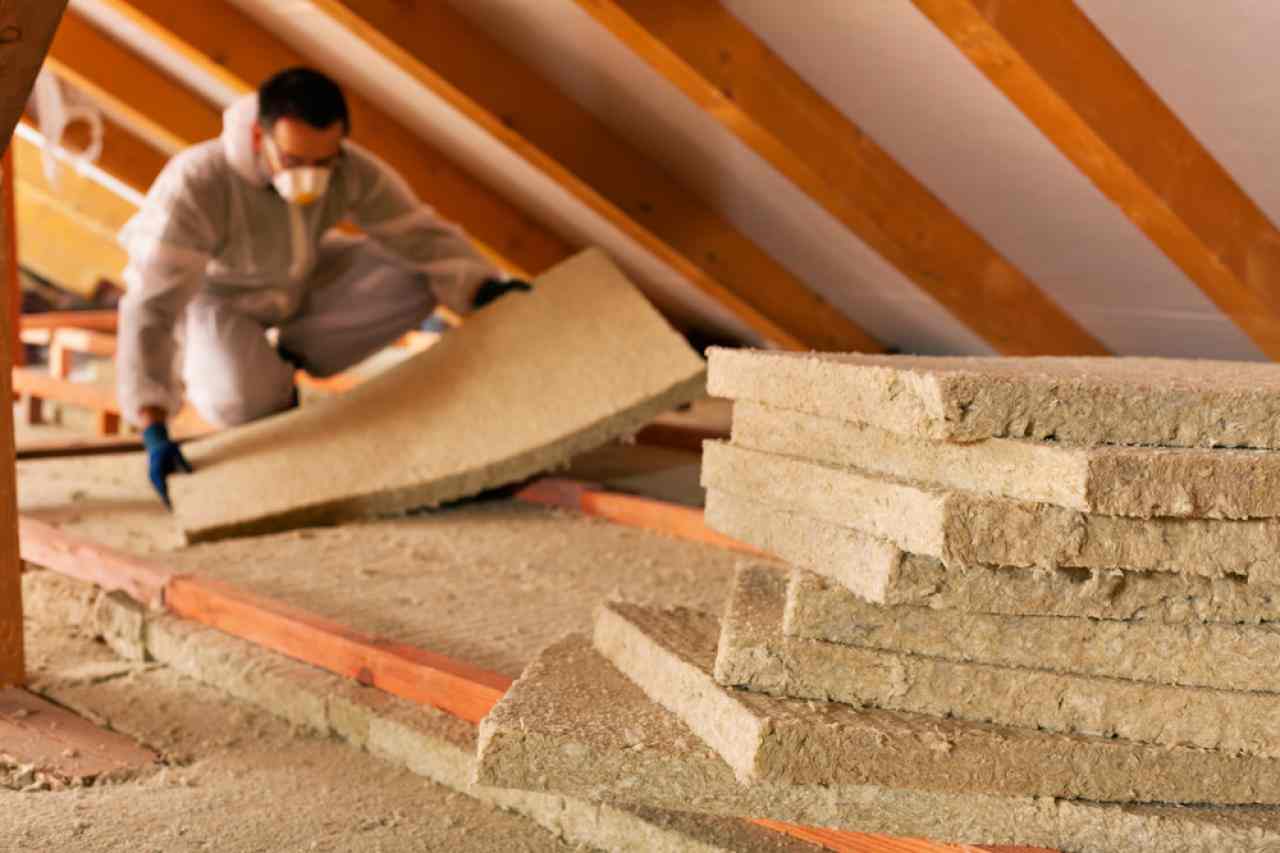Old Insulation in the attic could be a health hazard, and it should be removed as soon as possible. It could also cause a fire hazard. If you have old insulation in your attic, it is important to remove it safely. Removing old insulation is no easy task, but it is important to do it safely. Here are some tips on how to remove old insulation in the attic safely:
Quick Access
Identifying the Type of Insulation
The first step is to identify the type of insulation that is in the attic. There are three main types of insulation: fiberglass, cellulose, and rock wool. Each type of insulation has its own set of safety concerns.
Fiberglass Insulation
Fiberglass is the most common type of insulation. It is made from glass fibers and can be found in both rolls and batts. When removing fiberglass insulation, it is important to wear gloves, a dust mask, and eye protection. It is also important to avoid touching the insulation with your bare skin.
Cellulose Insulation
Cellulose insulation is made from recycled paper products. It is often used in attics because it is fire resistant. When removing cellulose insulation, it is important to wear a dust mask and gloves. It is also important to avoid touching the insulation with your bare skin.
Rock Wool Insulation
Rock wool insulation is made from rocks and minerals. It is often used in attics because it is fire resistant. When removing rock wool insulation, it is important to wear a dust mask, gloves, and eye protection. It is also important to avoid touching the insulation with your bare skin.
Once you have identified the type of insulation, you will need to remove it from the attic.
Removing Old Insulation
There are two ways to remove old insulation from your attic – the wet method and the dry method.
The Wet Method
The Wet method is when you use a hose to saturate the insulation with water. This will make the process of removing the insulation much easier as it will be softer and more pliable. However, this method does come with some risks. There is a chance that you could damage your walls or ceiling if you’re not careful, and there is also a chance that you could get mold or mildew growing in your attic if the area isn’t properly ventilated.
If you think you don’t have the time and right tools to remove your attic’s insulation, it’s probably best to hire a professional to do this method for you like iFoam, a spray foam insulation contractor. They are a team of experts who will safely and quickly remove any old insulation in your attic without damaging your home. But if you still want to try it yourself, be extra careful and take your time by reading these steps.
How to do the Wet method
1. Saturate the insulation with a hose.
2. Use a shovel or your hands to remove the insulation.
3. Be careful not to damage the walls or ceiling.
4. Ventilate the area well to avoid mold or mildew growth.
One of the tips in doing the wet method is to wet the insulation a few hours before you plan to remove it so that it has time to soften. Also, note that you should start at the edges of the insulation and work your way in.
The Dry Method
The dry method is when you remove the insulation without wetting it down first. This method is much more difficult, but it is also much safer. There is no risk of damaging your walls or ceiling, and there is also no risk of mold or mildew growth. However, this method is more difficult and time-consuming. It is also important to note that this method will not work on all types of insulation. Fiberglass insulation, for example, will not be removed with a vacuum.
How to do the Dry method
1. Use a vacuum cleaner with a hose attachment to remove the insulation.
2. Start at the edges of the insulation and work your way in.
3. Be careful not to damage the walls or ceiling.
4. Ventilate the area well to avoid mold or mildew growth.
Note that you should start at the edges of the insulation and work your way in so that you don’t miss any pieces. You should also be careful not to damage the walls or ceiling while you’re removing the insulation. Finally, make sure to ventilate the area well to avoid mold or mildew growth.
Recycling Old Insulation
Most recycling centers will accept old insulation for recycling. However, you should call ahead to make sure that they will accept the type of insulation you have. Some recycling centers may also charge a fee for recycling old insulation.
When taking old insulation to a recycling center, it is important to pack it properly. You should place the insulation in a garbage bag or container, and then seal it up. This will prevent the insulation from blowing away and becoming a hazard. You should also label the bag or container so that the recycling center knows what it is.
If you cannot find a recycling center that will accept old insulation, you can also dispose of it in your regular trash. However, you should check with your local landfill first to see if there are any special requirements for disposal.
Clean Up
Cleaning up the area is also a no-easy task. This includes vacuuming up any dust or debris, and also wiping down any surfaces that may have been contaminated with insulation fibers.
You should also inspect your attic for any signs of damage. If you find any holes or cracks, you will need to seal them up to prevent new insulation from being blown in. You should also check for any signs of water damage, as this could lead to mold or mildew growth. f you find any damage, it is important to repair it before adding new insulation. Otherwise, you could end up with an inefficient and dangerous attic.
Safety Precautions
When removing old insulation, it is important to take some safety precautions. First, you should wear gloves to protect your hands from fiberglass fibers. Second, you should wear a dust mask to avoid inhaling insulation dust. Finally, you should open windows and doors to ventilate the area and prevent mold or mildew growth.
Removing old insulation from your attic is a big job, but it is important to do it safely and correctly. Otherwise, you could end up with an inefficient and dangerous attic. Use the wet method if possible, as it is much easier and safer than the dry method. And be sure to recycle or dispose of the old insulation properly so that it doesn’t become a hazard.

